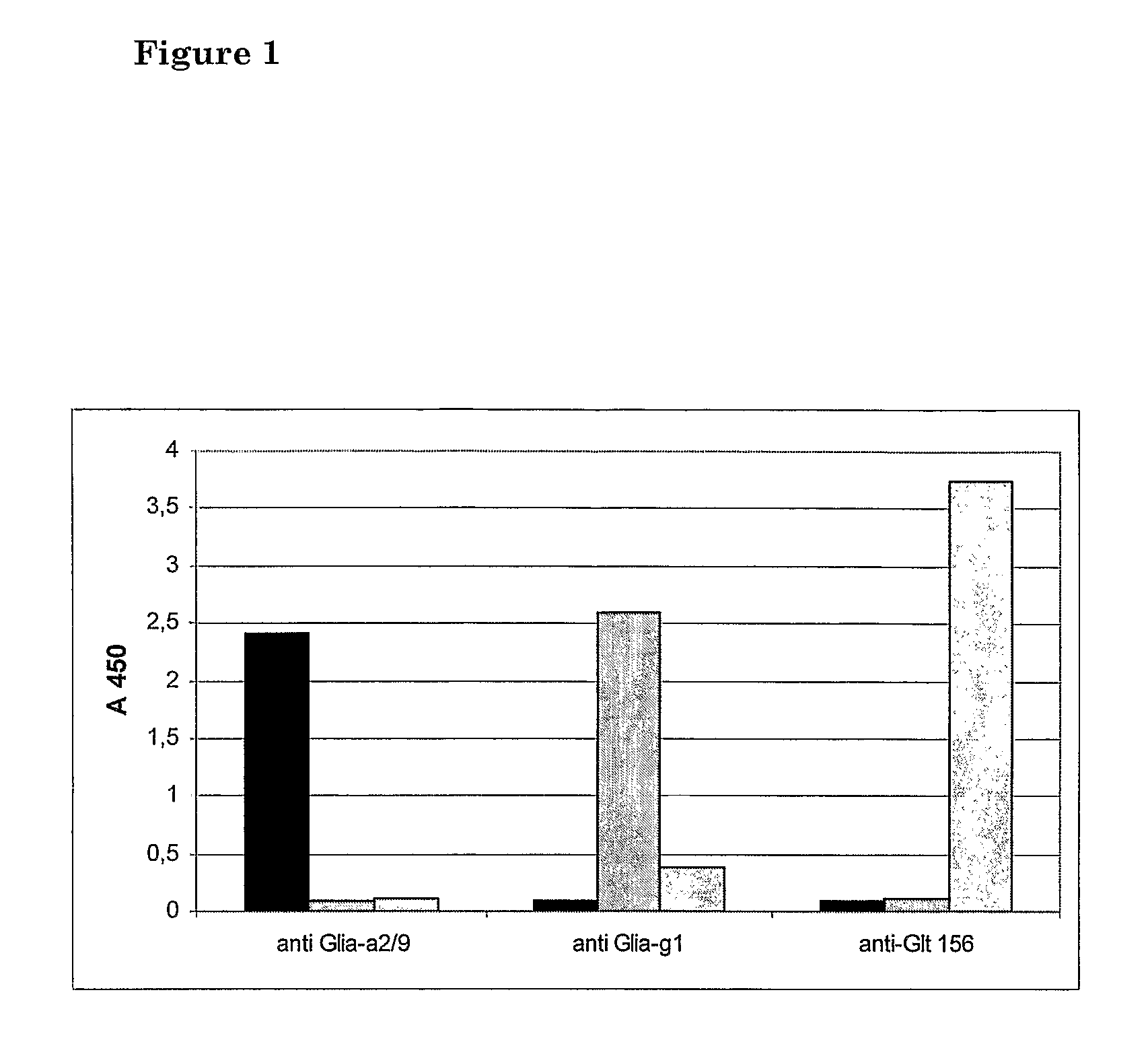Method for detecting gluten
a detection method and gluten technology, applied in the field of immunology and coeliac disease, can solve the problems of complex methods, low detection accuracy, and inability to detect low molecular weight and high molecular weight glutenin proteins,
- Summary
- Abstract
- Description
- Claims
- Application Information
AI Technical Summary
Problems solved by technology
Method used
Image
Examples
example 1
Materials and Methods
Synthetic Peptides
[0037]Peptides were synthesized by standard Fmoc chemistry on a SyroII peptide synthesizer. The integrity of the peptides was checked by rpHPLC and mass spectrometry. The S-acetyl-mercaptoacetic acid (SAMA) group was introduced in the resin-bound peptides by coupling of a 6-fold equimolar mixture of S-acetyl mercaptoacetic acid N-hydroxysuccinimide ester and 1-hydroxybenzotriazole in NMP during two hours. Biotin was introduced in the resin-bound peptides by a two hour coupling with a 6-fold equimolar preactivating mixture of biotin and PyBop / NMM.
Chemical Cross-Linking of Synthetic Peptides to Tetanus Toxoid (TTd) or Bovine Serum Albumin (BSA)
[0038]For crosslinking to TTd or BSA, an N-terminal S-acetyl-mercaptoacetic acid group (SAMA) was coupled to the peptides. The carrier proteins TTd and BSA (12 mg) were desalted and equilibrated in 1.8 ml of 100 mM NaH2PO4 / Na2HPO4 pH 7.8. In the carrier proteins bromoacetyl groups were introduced by adding ...
example 2
Materials and Methods
Database Searches
[0065]A wheat gliadin and glutenin subset was extracted from the Uniprot database using the SRS program (www.ebiac.uk). All epitope sequences listed in Table 5 were searched for full similarity against this subset using the stand-alone Macintosh version of the program PeptideSearch (http: / / www.mann.embl-heidelberg.de / GroupPages / PageLink / peptidesearchpage.html.)
Description of the Different Wheat Accessions
[0066]The wheat accessions used in this study were obtained from the small grain cereal collection maintained by the Centre for Genetic Resources (CGN, Wageningen, The Netherlands). The wheat accessions used in this study were selected on the basis of the species known to have played a role in the evolution of bread wheat, and they include all three genomes of the most important cereal crop in the world. Di-, tetra- and hexaploid accessions were used (Table 6). The accessions were selected from a small-grain cereal collection which contains well...
PUM
 Login to View More
Login to View More Abstract
Description
Claims
Application Information
 Login to View More
Login to View More - R&D
- Intellectual Property
- Life Sciences
- Materials
- Tech Scout
- Unparalleled Data Quality
- Higher Quality Content
- 60% Fewer Hallucinations
Browse by: Latest US Patents, China's latest patents, Technical Efficacy Thesaurus, Application Domain, Technology Topic, Popular Technical Reports.
© 2025 PatSnap. All rights reserved.Legal|Privacy policy|Modern Slavery Act Transparency Statement|Sitemap|About US| Contact US: help@patsnap.com



